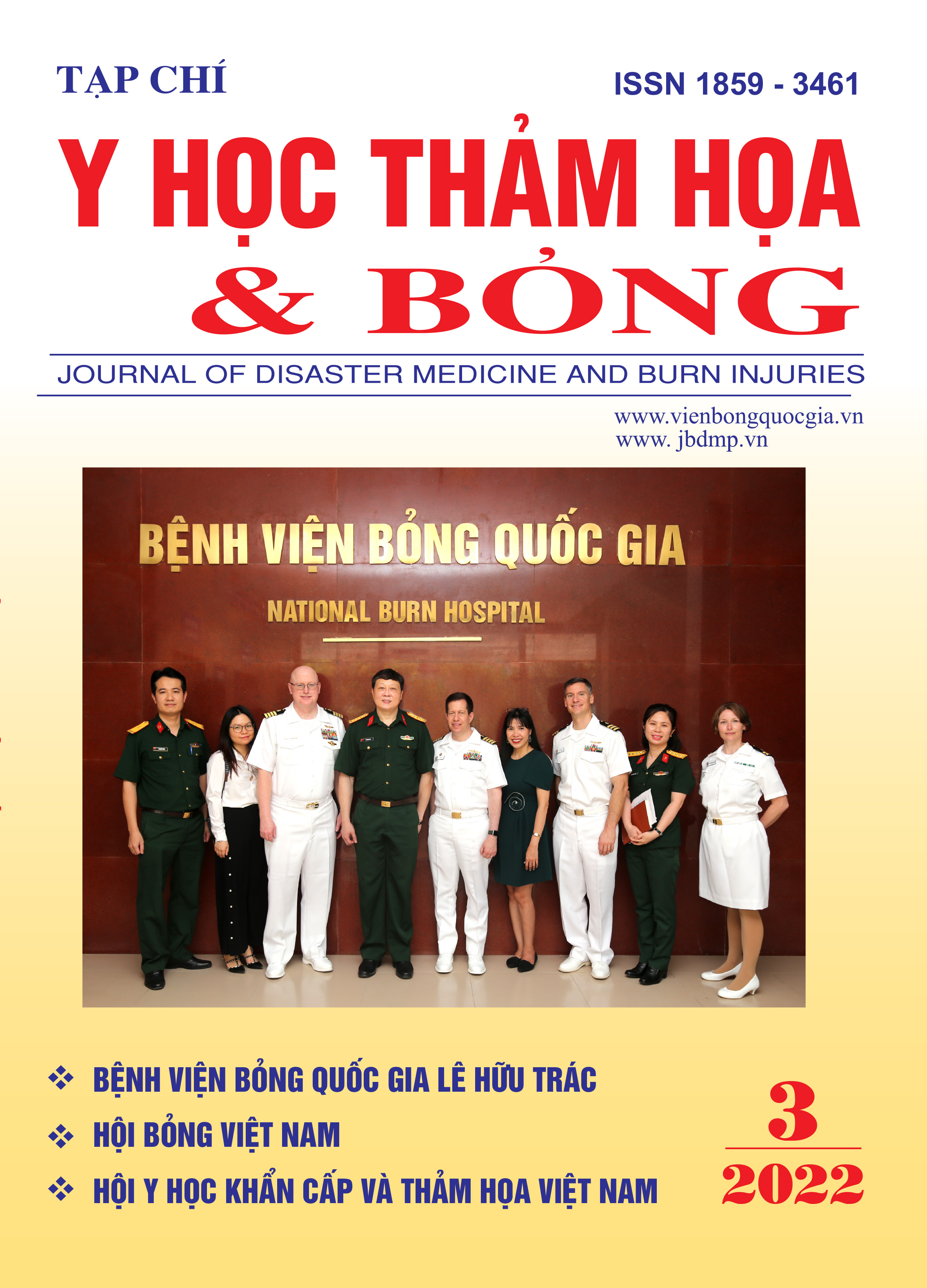Study of subacute toxicology of gel nano Berberin in subclinical and pathology in Rats.
Main Article Content
Abstract
Berberine is isolated from Coscinium fenestratum and several Ranunculaceae plants and it has been demonstrated to have therapeutic properties on the burn wound. The purpose of the study determined the subacute clinical toxicity of nano Berberine gel produced by the National Burn Hospital orally in rats.
Methods: The research was carried out according to The OECD 423, 2008 model. Conducted on 30 rats, divided into 3 groups, the test group administrated Dose 1 3.5g/1kg/24h, the group tested Dose 2 drank 10.5g/1kg/24h, the control group administrated distilled water Dose 10.2ml/1kg/24h. Taking the doses continuously for 28 days. Subclinical and pathological abnormalities in the livers, spleens, and kidneys were evaluated.
Results: There were no abnormal alterations in biochemical and hematological tests. There were no lesions on the microstructure of the livers, spleens, or kidneys.
Conclusion: Berberine nano gel was clinically safe when given to rats orally for 28 days between 3.5g/1kg/24h and 10.5g/1kg/24h.
Article Details
Keywords
Nano Berberine, rats, subacute toxicity
References
2. Anna Och; Rafał Podgórski, R.N., Biological Activity of Berberine-A Summary Update; 2020, 12(11), 713. Toxins, 2020. 12(11): p. 713.
3. Mirhadi E., R.M., Malaekeh-Nikouei B.;, Nano strategies for berberine delivery, a natural alkaloid of Berberis. Biomed Pharmacother., 2018. 104: p. 465-473.
4. OECD. OECD guidelines for testing of chemicals; Guideline 407: Repeated dose 28 - day oral toxicity in rodents. Organization of Economic and Cooperation Development, Paris, 1995.
5. OECD guideline for testing chemicals, OECD/OCDE 423; Repeated Dose 28-day Oral Toxicity Study in Rodents, Adopted 3rd October 2008.
6. Bộ Y Tế (2015).Hướng dẫn thử nghiệm tiền lâm sàng và lâm sàng thuốc đông y, thuốc từ dược liệu, QĐ 141/BYT-QĐ ngày 27/10/2015.
7. WHO (1993), Research guidelines for evaluating the safety and efficacy of herbal medicines, Manila, Philipin, pp 35 - 41.
8. Shannon Reagan-Shaw, Dose translation from animal to human studies revisited, The FASEB journal, 2008; vol. 22 no. 3 659-661.
9. Ji Yin Zhou, Shi Wen Zhou, et al; Chronic effects of berberine on blood, liver glucolipid metabolism and liver PPARs expression in diabetic hyperlipidemic rats; Biol Pharm Bull. 2008 Jun;31(6):1169-76.
10. Yi J, Ye X, Wang D, He K, Yang Y, Liu X, et al. Safety evaluation of main alkaloids from rhizoma coptidis. J Ethnopharmacol. 2013;145:303-310.
11. Ning N, Wang YZ, Zou ZY, Zhang DZ, Wang DZ, Li XG. Pharmacological and safety evaluation of fibrous root of rhizoma coptidis. Environ Toxicol Pharmacol. 2015;39:53-69.
12. Seyede Zohre Kamrani Rad, Maryam Rameshrad and Hossein Hosseinzadeh, Toxicology effects of Berberis vulgaris (barberry) and its active constituent, berberine: a review, Iran J Basic Med Sci., 2017. 20(5): p. 516-529.
13. Nitika Singh and Bechan Sharma; Toxicological Effects of Berberine and Sanguinarine; Front. Mol. Biosci., 19 March 2018.
14. Xueyan Chen, Yu Zhang, Zhongning Zhu, Huanlong Liu, Huicai Guo, Chen Xiong, Kerang Xie, Xiaofei Zhang, Suwen Su, Protective effect of berberine on doxorubicin-induced acute hepatorenal toxicity in rats; Molecular Medicine Reports; May-2016; Volume 13 Issue 5; Pages: 3953-3960.
15. Mahmoudi M, Zamani Taghizadeh Rabe S, Balali-Mood M, Karimi G, Memar B, Rahnama M, et al., Immunotoxicity induced in mice by subacute exposure to berberine. J Immunotoxicol., 2016. 13: p. 255-262.
16. Jiang Z, LF., Ong ES, Li SFY., Metabolic profile associated with glucose and cholesterol-lowering effects of berberine in Sprague-Dawley rats. Metabolomics, 2012. 8: p. 1052-1068.


